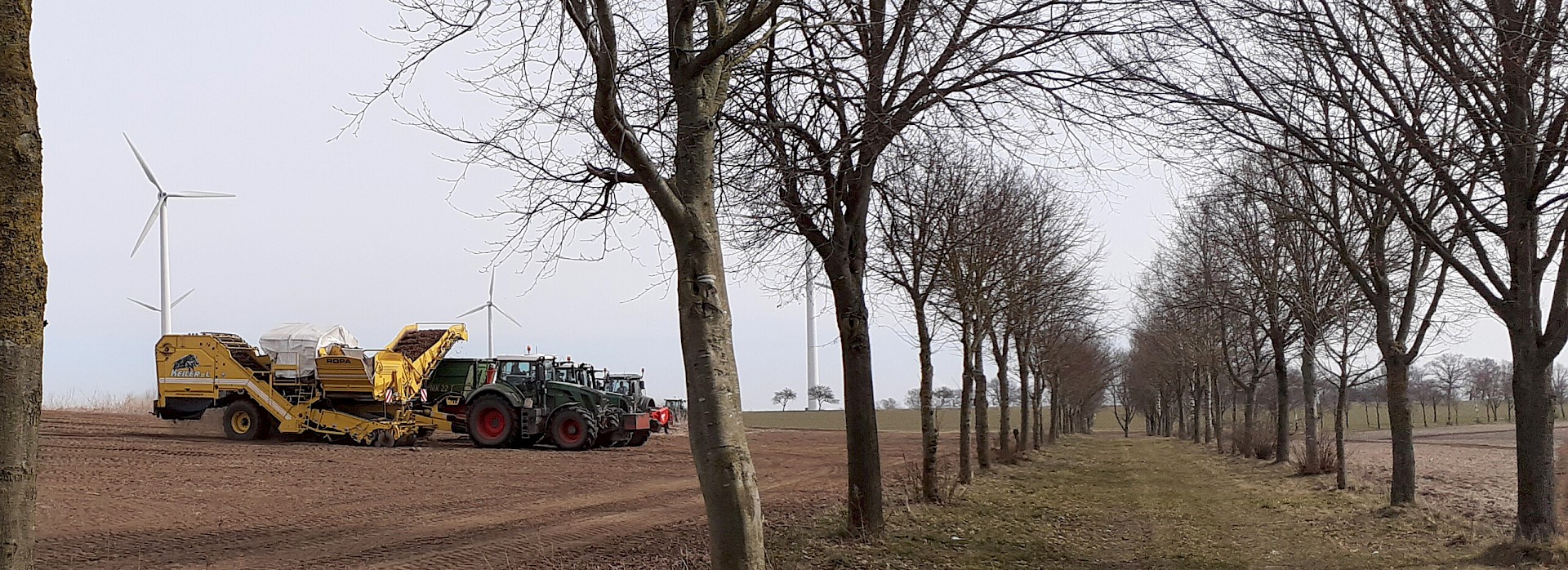Hans-Heinrich Grünhagen uses the ROPA Keiler for harvesting even in the months from February to April. In this colder season, however, there are no potatoes to pluck from the earth, but rather another tuber: the Jerusalem artichoke.
Since 2020, a ROPA Keiler 2 Classic has been used at Grünhagen in the north of Brandenburg. To maximize its power, the Keiler is equipped with a loading bunker. However, this 2,000 hectare operation does not just harvest its own potatoes; the Keiler is also used for contracting to other operations. In total, 340 hectares of potatoes were harvested last year. In the light soil with large amounts of fine grane, the Keiler 2 Classic can use its strengths to full advantage. The outstanding harvesting results were the main reason for selecting a ROPA Keiler. Similarly, operations manager Grünhagen praises the good view from the harvester and professional support from the ROPA sales partner BLT and ROPA factory customer service.
Jerusalem artichoke and its use
In addition to the potatoes, Jerusalem artichokes have been grown by this operation for 25 years. 60 hectares are cultivated; this makes the Grünhagen operation one of the largest in Germany.
The idea of cultivating these unusual tubers reaches back to Grünhagen's childhood. His father planted Jerusalem artichokes for ethanol production. When a Jerusalem artichoke processor found the operation and proposed a cooperation, Hans Heinrich Grünhagen accepted the proposal - since then, a large portion of the demand of the German health and pet markets has been served with tubers from Heiligengrabe.
Plant, hoe, harvest
Jerusalem artichokes are planted in the spring with a normal potato planting machine. The tubers do not pose great any great demands. Furthermore, aside from running over them once with a hoe or a harrow for weed control, no other work is required before the harvest.
For harvesting, the leaves, which are up to 3 m high and were frozen in winter, are chopped down to a height of 20 cm with a field chopper and then the remains are removed with a haulm topper.
The operation concentrates the Jerusalem artichokes with a windrower in order to harvest them with the Keiler subsequently. With an average harvesting speed of 6 km/h, the daily performance of the Keiler is also just right, says Hans Heinrich Grünhagen.
The operations manager names the water and nitrogen supply and the stones in the fields some of the biggest challenges in this cultivation. For cost reasons, the products are neither separated nor are the stones sorted out on the harvester. Stones are sorted out after harvesting with a stone separator developed in-house.
Operations manager Grünhagen and his driver Guido Wilk are enthusiastic about the robust nature of the Keiler. Another big plus point for both of them is the harvester's open and easily accessible design, for it reduces downtimes to a minimum for necessary maintenance work








